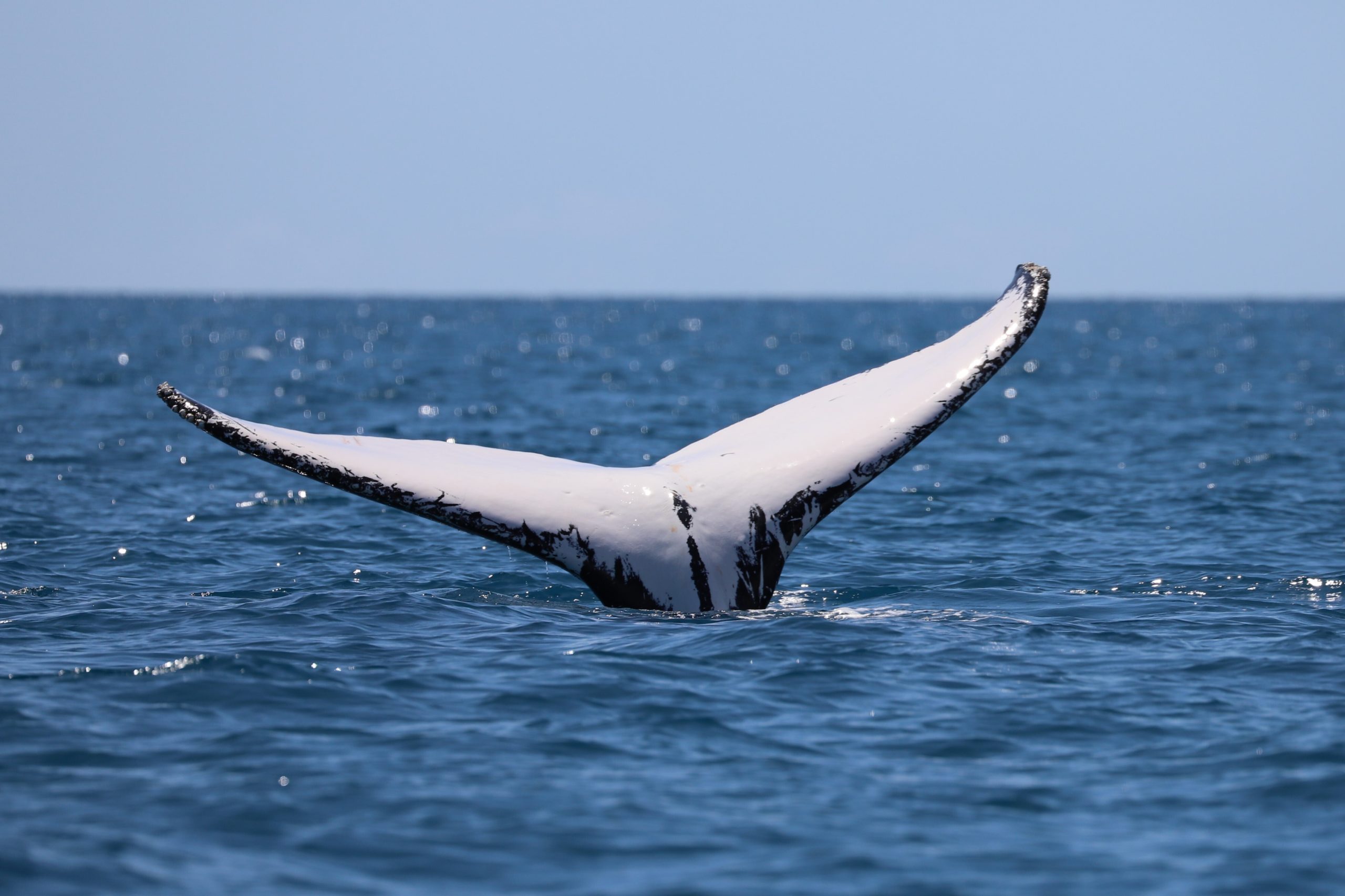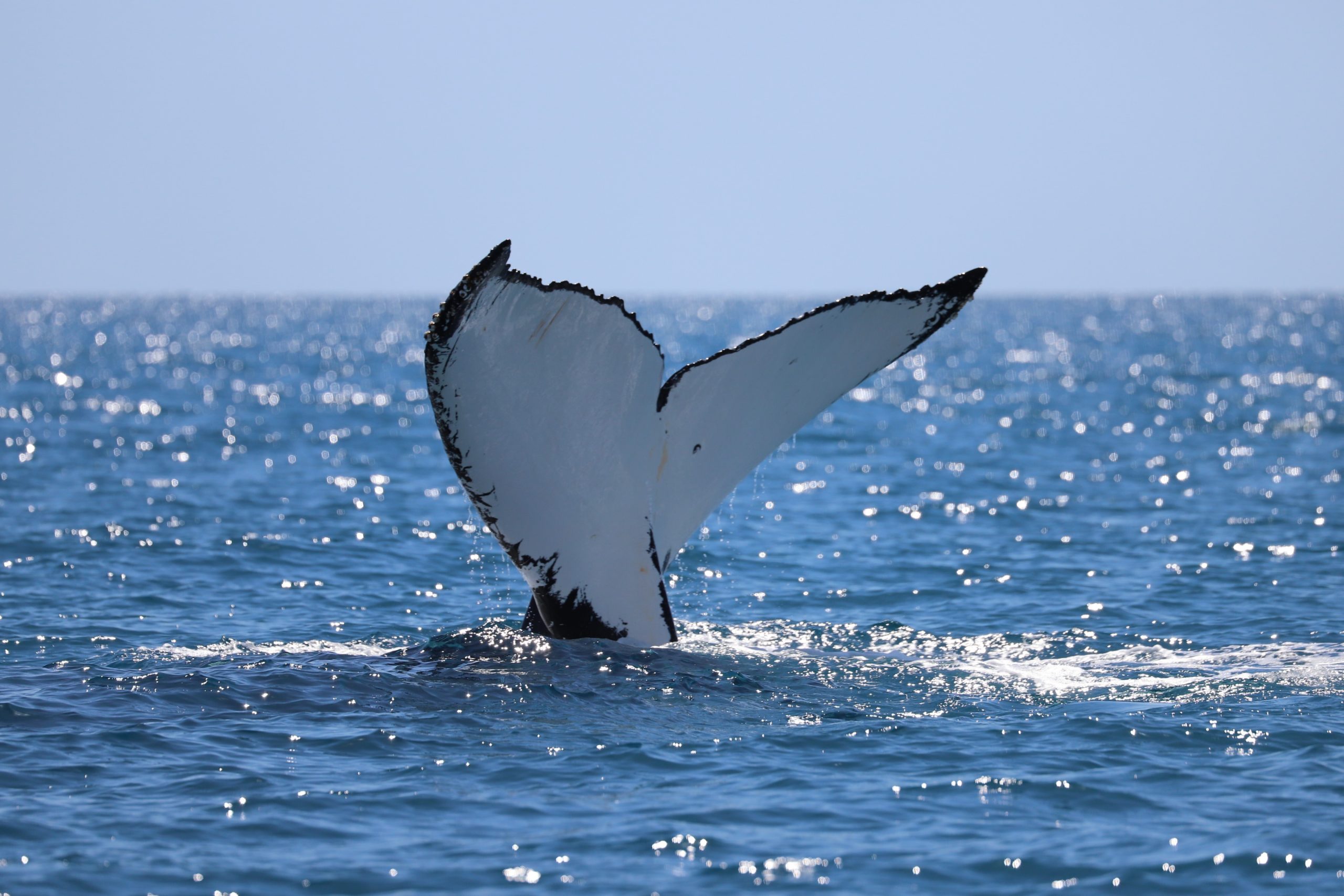What is that and why do whales do it?
A recent popular social media video depicts a man in Australia enjoying a paddle in his kayak, when he stumbled upon a humpback whale demonstrating strange behavior. The whale in question had its tail sticking straight out of the water for an extended period of time and didn’t appear to be moving. The video sparked much interest and curiosity among viewers – why was the whale doing that? The whale in the video had a calf with her, and the calf was pictured swimming lazily in circles around the mum as she remained in this upside-down position.
In the scientific literature there is only a single paper (Morete et al. 2003) describing this behavior in humpback whales. In this article, the authors called this behavior “tail-up” or “tailing” and speculated on various reasons why a whale would do this. There is also an older article published (Payne, 1980) describing a similar phenomenon in a different species, southern right whales, off the Valdes Peninsula, Argentina. In this instance, the author dubbed the behavior “sailing”. We prefer not to use the term “sailing” for the behavior that we’ve observed because it implies a form of locomotion is taking place, i.e. the whale catching the wind with its tail and using this to move from one place to another, and we have not observed this to be the case.


At Pacific Whale Foundation, we believe it to be a nursing position that allows the mother to rest, and therefore have nicknamed this posture “fluke-up feeding”. PWF has documented whales doing this behavior many times in both Hervey Bay, Australia and Maui, Hawaiʻi. In all of our observations of humpback whales in the extended “tail up” position, it has been exclusively a mother with a calf dynamic. The amount of tail extension varies; sometimes the entire tail and part of the peduncle (tail stock) are extended out of the water and, at other times, it’s just the tips of the flukes that are visible above the water. Our interpretation of this behavior is that the mother will remain in this position for a period of rest (like a power nap) while the calf alternates between short periods of nursing and swimming in small circles around mum. Because of mum’s position, the calf has easy access to her mammary glands and can nurse without needing to make a deep dive.
There are inherent complexities to understanding and interpreting the behavior of wild animals, especially animals that live in the ocean, and so we will continue to document this behavior and better understand “why do whales do that?”
Learn more about humpback whales and dolphins at pacificwhale.org
Literature Cited:
Morete, Maria; Freitas, Ana; Engel, Marcia; Pace, Richard M. III; and Clapham, Phillip (2003). A Novel Behavior Observed in Humpback Whales on Wintering Grounds at Abrolhos Bank (Brazil). Publications, Agencies and Staff of the U.S. Department of Commerce. 162.
Payne, R. 1980. Research on the behavior of various species of whales. National Geographic Society Research Reports 12:551-564.
